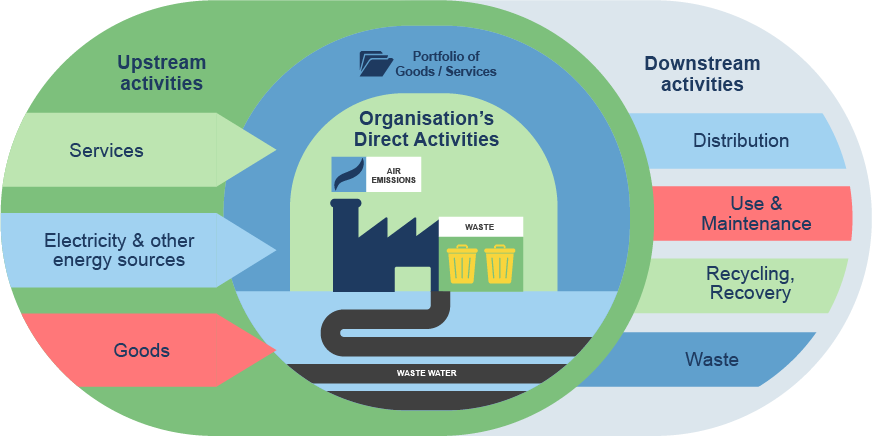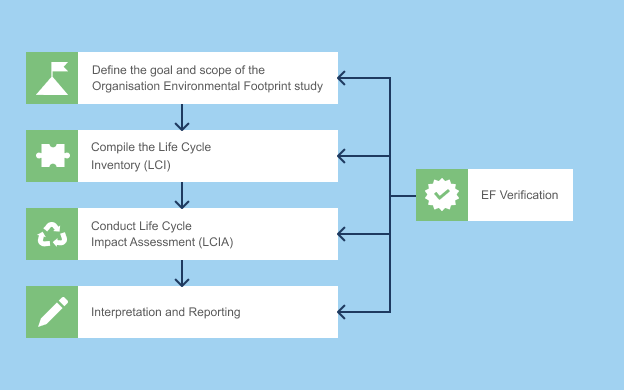Organisation Environmental Footprint: How it works
Similarly to PEF, the Organisation Environmental Footprint (OEF) method utilises Life Cycle Assessment (LCA) to assess, manage and communicate the environmental impacts of organisations, including both businesses and public entities, from a life cycle perspective (i.e. beyond their walls). The Organisation Environmental Footprint (OEF) addresses use of resources, emissions of pollutants and other waste streams associated with the provision of a well-defined portfolio of products or activities of an organisation. The OEF estimates the impacts of the operations of the organisation, as well as direct and indirect impact contributions from upstream (resources production, processing and supply) and, where relevant, downstream processes (distribution, use and end-of-life).
OEF can be calculated using aggregated data, i.e., without the need to calculate individual PEF results and sum them up.
Scope of the Organisation Environmental Footprint

An organisation offers a portfolio of products (i.e. goods and/or services). OEF considers the downstream activities (ex. raw material extraction) and the organisation’s own activities (ex. manufacturing & packaging) and their emissions to create its portfolio. Each of the activities has an impact on the environment and humans. The downstream activities (ex. distribution, use & maintenance, recycling, recovery and waste) are only accounted for where relevant.
Phases of an OEF study

Organisation Environmental Footprint Category Rules (OEFSRs): How they are developed
The OEF method enhances the reliability of results, especially when these are based on available and relevant Organisation Environmental Footprint Sector Rules (OEFSR). OEFSRs set clear and specific guidelines for calculating environmental information within a specific sector, although comparability between organisations may not be possible.
Just like the PEFCRs, the OEFCRs are drafted, managed and updated by the Technical Secretariat.


